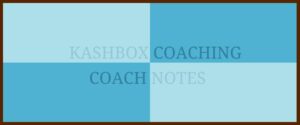The 2008 financial crisis was a masterclass in economic upheaval, but for millions of working professionals, it also delivered a more personal lesson: no job is guaranteed. Overnight, entire departments vanished, companies folded, and “safe” careers unraveled. While economic shocks can’t always be avoided, the ability to analyze whether your job is truly secure can mean the difference between staying ahead—or getting blindsided.
Here are some key lessons from the 2008 collapse on how to evaluate your job security, and what to do if the writing is on the wall.
Watch the Numbers—Even If You’re Not in Finance
Many employees in 2008 were caught off guard because they weren’t paying attention to the financial health of their employer. Declining revenue, cost-cutting, missed earnings, or rising debt are warning signs that shouldn’t be ignored.
Lesson: Start reading the signs early. Public companies publish earnings reports; private companies often signal strain through hiring freezes, reduced bonuses, or expense limitations. Ask yourself: is the business growing, stagnant, or shrinking? If you’re not sure, find out.

5 Powerful Secrets of High-Performing Leaders
✓ 4 Strategic Wins for instant clarity and execution
✓ Beat Parkinson’s Law to dominate your schedule
✓ Optimize Your Energy for unstoppable productivity
✓ Read to Lead to accelerate personal and career growth
✓ Proven Learning Method that cements breakthroughs
Know Where You Sit in the Value Chain
Not all jobs are equally vulnerable during a downturn. In 2008, companies cut non-essential roles first—often in support departments, middle management, or functions not directly tied to revenue or mission-critical operations.
Lesson: Understand your role’s impact. Are you seen as a cost center or a value driver? The more your work supports revenue, retention, or essential services, the more likely you are to be retained. If you’re not there yet, consider how to pivot or upskill accordingly.
Pay Attention to Manager Behavior
One of the subtle signals of instability in 2008 was a shift in leadership behavior—closed-door meetings, vague reassurances, or managers suddenly becoming noncommittal. Often, layoffs were planned well in advance, but communication lagged until the last moment.
Lesson: Trust your instincts. If leadership seems tense, strategic projects stall, or communication becomes cloudy, that could be a sign of trouble. Transparency tends to fade when companies are bracing for tough decisions.
Diversify Your Value and Visibility
In tough times, companies tend to keep employees who are visible, versatile, and cross-functional. Those who quietly deliver solid work but don’t actively contribute across teams or initiatives can be overlooked.
Lesson: Don’t assume your performance speaks for itself. Advocate for your work, collaborate widely, and build relationships beyond your immediate team. Make it easy for decision-makers to see your value.

Ready to Find Your Perfect Kashbox Coach?
Every executive and business leader has unique strengths and faces specific challenges. That’s why we offer a diverse team of experienced coaches, each with specialized expertise in different areas of leadership coaching.
Click the button below to match with a Kashbox Coaching leadership coach who can best help you unlock your full potential.
Always Have a Plan B
Perhaps the hardest lesson of 2008 was that even good employees in strong companies weren’t immune. Some of the best workers were let go simply because their department was eliminated.
Lesson: Always be prepared. Keep your résumé current, nurture your professional network, and know your worth in the job market. Being ready to move quickly isn’t being disloyal—it’s being realistic.
Conclusion: Hope for the Best, Prepare for the Shift
The 2008 financial crisis taught us that no one is too essential to be let go. But it also taught us how to read the signs. Stay informed, stay flexible, and most of all—stay proactive. Your future may depend on it.

As the President of Kashbox Coaching my mission is to empower leaders by highlighting their unique strengths and unlocking their leadership potential – to develop all quadrants of their Kashbox (Knowledge, Attitude, Skills, Habits)!
For over 15 years, Hannah Kay Herdlinger has empowered individuals to unlock their full potential and design fulfilling careers and lives. She championed leadership at Sheryl Sandberg’s Lean In and Arianna Huffington’s Thrive Global.
The KASH Method, created by the founder of Kashbox Coaching, offers leaders a unique path to success and positive change. It goes beyond traditional coaching by integrating leadership development, resilience training, and the power of connection to elevate client experiences.
Hannah Kay’s passion is igniting positive and lasting transformations. Through executive, corporate, and individual coaching, she helps clients align professionally. Her journey is a testament to the transformative power of coaching. Her unwavering commitment to empowering others is evident in her own growth and the success of her clients.













